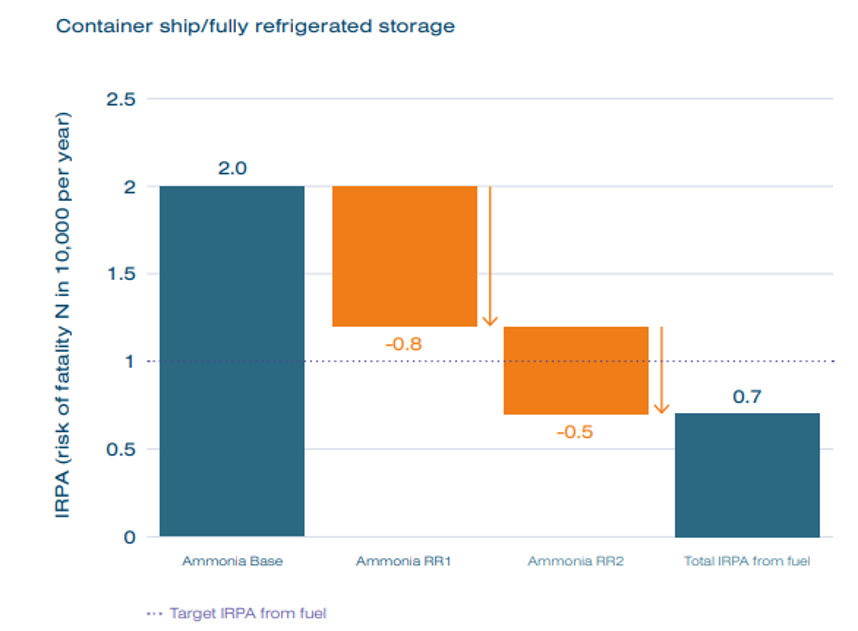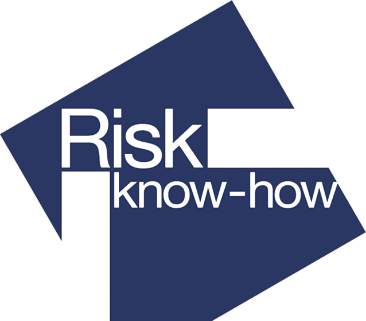Background
The shipping industry will change dramatically as the sector decarbonises and moves away from fossil-based fuels shown in the image bellow. Several alternative fuels (including hydrogen, methanol, ammonia and others) are under consideration for use on ocean-going vessels. Across the shipping industry studies and investigations are underway to assess the pros and cons of these fuels.

Ammonia has several benefits as a potential zero-carbon fuel for shipping. It can be truly zero carbon; it is relatively easy to handle and has an acceptable energy density. However, it is toxic, which creates hazards both for people and the environment.
This case study describes how a detailed technical study into the safety of ammonia as a shipping fuel was made accessible and valuable to non-technical stakeholders such as businesspeople and policymakers.
The challenge
The Lloyd’s Register Maritime Decarbonisation Hub (The Hub) is focused on overcoming hurdles to the introduction of zero carbon fuels for shipping. We make evidence public to support effective decision making across industry. As part of this we identify the risks to crew posed by these fuels and propose mitigation approaches. The work involves detailed analysis and modelling by scientific and technical experts. Communicating the results requires getting the facts and evidence across in a way that people can act on.
One challenge faced by the Hub is to ensure our work is properly understood so stakeholders make decisions based on meaningful evidence. In the case of ammonia as a fuel there are a range of risks of varying severity and a range of mitigations and associated costs. There is no single or simple solution.
Our approach
To get across the overall point – that making shipping fuels safe means addressing different challenges with multiple solutions, we used waterfall charts, as illustrated below. This type of chart is particularly effective because it brings together the initial risks, the mitigation steps taken and the eventual outcome, all in a single visualisation. For accessibility, scientific notation in figures is avoided. For example, we use 1 in 100 rather than 10E-2.
Visualising the reduction in risk from different measures

The chart shows how a combination of risk reduction measures can reduce the individual risk per annum (IRPA), for crew onboard an ammonia fuelled containership with refrigerated fuel storage. Together, risk reduction measure 1 (RR1) and risk reduction measure 2 (RR2) reduce IRPA from 2 in 10,000 to 0.7 in 10,000 [See framework section on why it matters to keep denominators consistent] and achieve a risk level below the target IRPA for the fuel. This applies to a containership design with fully refrigerated fuel storage. For other types of ship and fuel storage systems, different combinations of risk reduction measures were required to achieve target.
Applying the Risk know-how framework
To ensure that the Ammonia safety study was as widely accessible as possible we followed some key principles of the Risk know-how Framework.
Clarify what is being discussed
The scope of the study was carefully defined. Often narratives around ammonia as a shipping fuel centre on a polarised conclusion either that it is safe and can be used, or unsafe and should not be used. We considered all the evidence, whatever the direction it points towards. Risk assessments were made for defined crew roles, ship types, fuel storage technologies.
Quantify values such as high risk and low risk
A statement that a risk is ‘high or ‘low’ can be interpreted many ways, leading to confusion and uncertainty. We defined ‘unacceptable’ and ‘broadly acceptable’ risk thresholds with reference to published, widely used & reputable source. Risks were then quantified against these thresholds giving figures of 1 in N per year risk of fatality.
Understand the effects of comparisons and context
The risk caused by ammonia fuel is not the only risk to seafarers, there are many other risks to life at sea which put the fuel related risk into context. To put the study in context, we provided figures from other studies of actual fatalities in shipping caused by other hazards. We graphically illustrated risk figures relative to thresholds published by reputable public bodies (The International Maritime Organisation, the UK Health and Safety Executive) thus providing credibility to the audience, and benchmarks against which to assess.
Differentiate between absolute and relative risk
Relative risk figures can be misleading. Even if a risk has halved, it may still be too high. All our figures are referenced to absolute risk. In one example, subdivision of a fuel preparation room reduced individual risk of fatality by 56%, but it was still above the target of 1 in 10,000 per year, so further reduction measures were taken.
Understand averages
Quoting an overall average risk can obscure higher risks for specific groups. We broke the crew down into groups by function, the members of each group having similar risks, and then provided figures for the group at highest risk, the engineering ratings.
Limitations
There are also limitations to the work. We did look at the risks from fossil-based fuel on the same basis, but we did not compare with other alternative fuels. We do not compare the risk to ship’s crews of a hazardous fuel with the do-nothing risk of catastrophic climate change to all of humanity. Neither do we quantify the trade-offs between the safety of people and the safety of the environment.
Expected Impact
Provision of quantitative evidence about the risks of adopting alternative fuels and the mitigation measures required will help stakeholders from across the shipping industry make better decisions as they navigate the energy transition.
- National Governments (known as flag states) and international non-governmental organisations (NGOs) will be able to create informed policies enabling the decarbonisation benefits of ammonia, understanding the simultaneous safeguards that must be implemented.
- National and international regulators will be able to create informed regulations with confidence in their effectiveness and longevity, knowing that they are evidence-based.
- Ship designers can create safer ship designs based on our recommendations on vessel layout, ventilation, fuel storage and safety equipment.
- Ship operators are provided with guidance on the operational processes that require transformation, such as training, process safety and emergency response.
- Ship owners will be able to adapt vessel specifications to account for the impact of future fuel adoption.
- Ship financiers can make improved investment decisions based on a deeper understanding of the additional capital cost drivers required for crew safety.
- Class societies have additional evidence with which to develop rules & guidelines for safety.
Applying the insights from the Risk know-how Framework to the ammonia safety report will help the shipping community around the world navigate the evidence around safety of ammonia as a fuel and assess the risks to crew in their own context.
About the Lloyd’s Register Maritime Decarbonisation Hub
The Maritime Decarbonisation Hub, established as a collaboration between Lloyd’s Register Group and Foundation, serves as a platform for thought leaders and subject matter experts in the maritime industry. Its primary goal is to facilitate the design, development, and commercialization of pathways toward future fuels necessary for decarbonisation efforts. Find the Lloyd’s Register’s full report on recommendations for design and operation of ammonia-fuelled vessels here.
About the author
Andy Franks is a Senior Principal Specialist in The Maritime Decarbonisation Hub with over thirty years’ experience in risk assessment, particularly about hazards with high impact potential.
He has been in charge of quantitative risk assessments on installations using flammable materials, hazard identification and risk analyses. For the last six years he has worked on the development of novel risk assessment methods for tankers and other cargo ships, together with development of safety cases for naval vessels.
He lectures internationally on quantitative and qualitative risk analysis methods, risk assessment and accident investigation. He has a doctorate in chemistry and is a Chartered Engineer.

